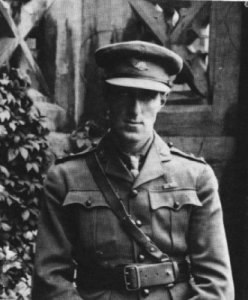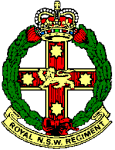 LIEUTENANT LEONARD KEYZOR[1] VC
LIEUTENANT LEONARD KEYZOR[1] VC
1st Battalion, 1st Brigade, 1st Division
LEONARD KEYZOR was born on November 1895 at Maida Vale, London, son of Benjamin Keyzor. Educated at Tonnleigh Castle, Ramsgate, he moved to Canada to settle after his schooling. Three months before the outbreak of war he travelled to Australia and found employment in Sydney as a clerk.
Keyzor enlisted in the AIF on 18 August 1914 and was posted to the 1st Australian Infantry Battalion, which was just then forming at Randwick. 958 Private Leonard Keyzor embarked with his unit on 18 October on board A19 SS Afric disembarking at Alexandria, Egypt on 14 December 1914.
After further training in Egypt with 1st Battalion he landed with the Battalion at Gallipoli on 25 April 1915. While at Gallipoli he was promoted to Lance Corporal on 20 June 1915.
During the Allied Offensive Operations which began on 6th August the 1st Australian Infantry Brigade made a diversionary but spirited attack against the Turkish defences at Lone Pine. This surprise, but costly attack, caught the Turks unawares. It commenced at 5:30pm and the Lone Pine trench system was in Australian hands within 30 minutes and the 1st Brigade established a line of defensive posts around Lone Pine.
Soon after dark the Turks moved in reinforcements and made the first of a series of bombing attacks that were to continue for three days. On 7 August Lance Corporal Keyzor was in a trench which was being heavily bombed by the enemy. At great risk to himself he picked up two live Turkish bombs and threw them back at the enemy. Although wounded, he kept throwing bombs. The next day, at the same place, he bombed the enemy out of a position which had made his trench vulnerable. He was again wounded. Although he was recommended for evacuation he stayed in the trenches and threw bombs for another Company which had lost all of its bomb throwers. Keyzor kept throwing both Turkish bombs and crude Australian bombs, manufactured on the beach, for fifty hours before he allowed himself to be evacuated for treatment. On 9 August the enemy finally abandoned their counter-attack. The London Gazette notification on 15 October of his award of a Victoria Cross reads:
For most conspicuous bravery and devotion to duty at Lone Pine trenches in the Gallipoli trenches. On 7th August 1915 he was in a trench which was being heavily bombed by the enemy. He picked up two live bombs and threw them back at the enemy at great risk to his own life and continued throwing bombs, although himself wounded, thereby saving a portion of the trench which it was most important to hold. On August 8, at the same place, Private Keyzor successfully bombed the enemy out of a position from which a temporary mastery over his own trench had been obtained and was again wounded. Although marked for hospital he declined to leave and volunteered to throw bombs for another Company which had lost its bomb throwers. He continued to bomb the enemy till the situation was relieved.
After Lone Pine Keyzor was evacuated to Britain suffering from enteric fever. He was presented with his Victoria Cross by King George V at an investiture ceremony at Buckingham Palace on 15 January 1916.
Keyzor rejoined his battalion in France in March 1916 and participated in the AIF operations against the German defences at Pozières in July and August 1916. In December 1916 he was promoted to sergeant and on 13 January 1917 he was appointed a Second Lieutenant then promoted to Lieutenant on 28 July 1916. On 17 November 1916 he was transferred to the 42nd Australian Infantry Battalion and was wounded on two occasions on 28 March 1918 in the Mericourt-Sailly-le-Sec line and in a gas bombardment near Villers-Bretonneux on 26 May 1918.
Mainly due to wounds Keyzor returned to Australia on 24 August 1918 and was discharged on medical grounds on 12 December 1918. He returned to his pre-war employment as a clerk. In 1920 he returned to London and there, on 21 July 1921, married Gladys Benjamin at the Hill Street synagogue. There was one daughter of the marriage. He returned to his place of birth in Maida Vale and entered into an importing business. Because he was living in Britain, he was the only Australian awarded a Victoria Cross during the First World War to attend the first two Victoria Cross Reunions held in 1920 and 1929.
Keyzor was, ironically, injured in 1927 while attempting to re-enact his bombing feats for a film entitled For Valour.
On the list of Reserve Officers of the Australian Military Forces he was rejected in 1939 on medical grounds when he attempted to enlist for service in the Second World War.
Lieutenant Leonard Keyzor VC died in London of cancer on 12 October 1951 and was cremated after a memorial service at the Liberal Jewish Synagogue, St Johns Wood.
In 1977 Keyzor’s Victoria Cross and other service medals (except his 1914-15 Star) were purchased at auction in London by the Returned Services League. They are now displayed in the Hall of Valour at the Australian War Memorial.
[1] There are two versions for spelling Keyzor’s surname. The correct spelling according to his Personal Records (often in his own handwriting) held at the National Australian Archives is Keyzor.
